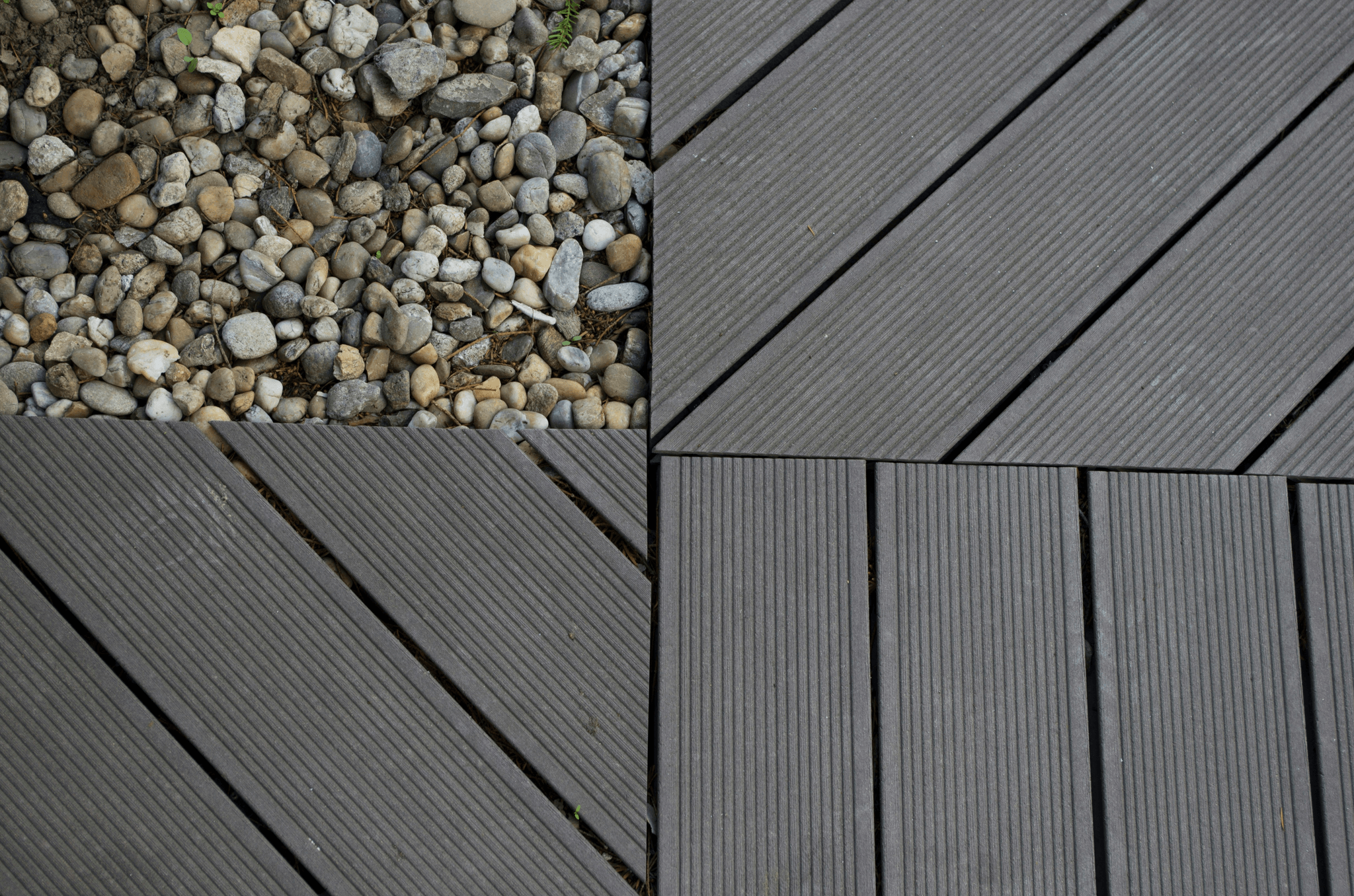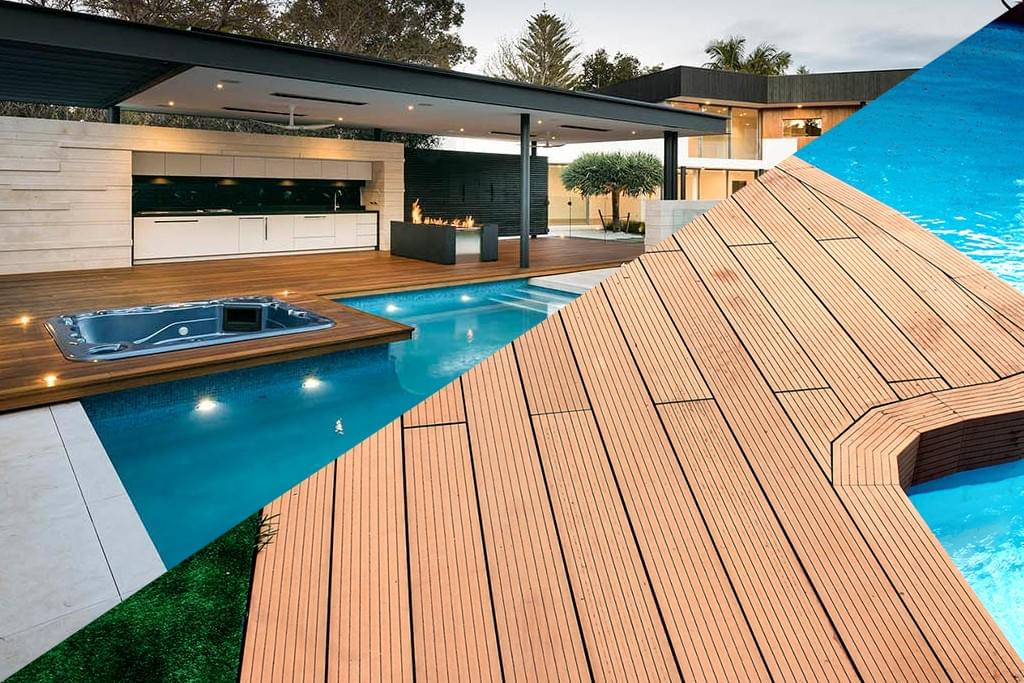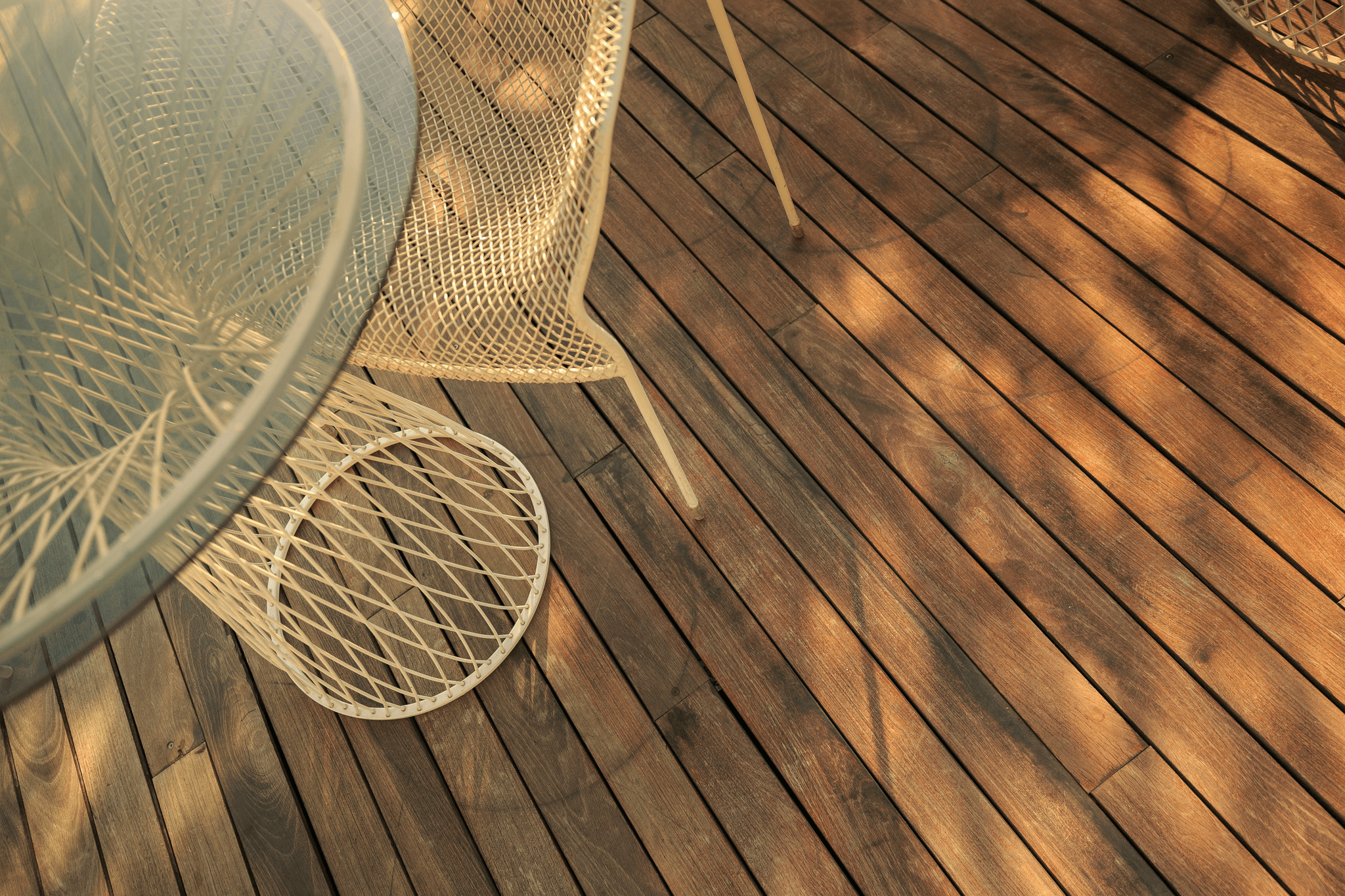Introduction

This seemingly simple aspect can significantly influence the overall performance, aesthetics, and longevity of your outdoor space. Understanding the nuances of deck board thickness will empower you to make informed decisions that align with your project goals.
Understanding Deck Board Thickness
Deck board thickness refers to how thick each individual board is, typically measured in inches or millimeters. The standard thickness options vary based on materials—wood, composite, or PVC—and each brings its own set of characteristics. Knowing the specific measurements and standards helps ensure that you select the right deck board thickness for your project.
Importance of Choosing the Right Thickness
Selecting the appropriate deck board thickness is essential for several reasons, including durability and safety. A thicker board can withstand heavier loads and resist warping over time, making it a wise choice for high-traffic areas or climates with extreme weather conditions. Moreover, choosing the right thickness not only enhances functionality but also contributes to the overall aesthetic appeal of your deck.
Key Factors Influencing Deck Board Thickness
Several factors come into play when determining the ideal deck board thickness for your needs. These include climate considerations, intended use (such as entertaining or lounging), and material type—each influencing how well a particular thickness will perform over time. By weighing these factors carefully, you can make an educated decision that suits both your practical requirements and design aspirations.
What is Deck Board Thickness?

Defining Deck Board Thickness
Deck board thickness is simply the measurement of how thick each board is, typically expressed in inches or millimeters. This measurement plays a crucial role in determining the overall strength and durability of your deck. Thicker boards tend to be more robust and capable of withstanding heavier loads, making them a popular choice for many homeowners.
Measurement Standards for Thickness
When measuring deck board thickness, it's important to adhere to industry standards to ensure consistency and reliability. Most manufacturers provide specifications that detail the nominal size versus actual size; for example, a board marketed as 2x6 inches may actually measure 1.5x5.5 inches due to milling processes. Being aware of these nuances helps you make informed decisions when selecting materials based on their true dimensions.
Common Thickness Options
Deck boards come in various thickness options, typically ranging from 1 inch up to 2 inches or more depending on the material used and intended application. For instance, pressure-treated wood often has standard thicknesses like 1-inch or 1-1/4-inch boards, while composite decking may offer different profiles altogether. Choosing the right thickness can significantly impact both aesthetics and functionality; thicker boards often provide enhanced stability but may come at a higher cost.
The Impact of Deck Board Thickness on Durability

When it comes to deck board thickness, the relationship between thickness and durability is a crucial factor for homeowners and builders alike. Thicker boards generally offer improved resistance against wear and tear, making them a popular choice for high-traffic areas. A well-chosen deck board thickness can significantly enhance the lifespan of your decking, ensuring that it withstands the elements over time.
How Thickness Affects Longevity
The longevity of your deck is often directly influenced by its thickness. Thicker boards tend to resist bending, warping, and cracking under pressure better than their thinner counterparts. This enhanced durability means that with proper maintenance, decks constructed from thicker materials can last significantly longer, providing peace of mind for homeowners who want to invest wisely in their outdoor spaces.
Moreover, increased thickness allows for greater stability when subjected to various environmental factors such as rain or snow. In regions where heavy snowfall or rain is common, opting for a thicker deck board can be a game-changer in maintaining structural integrity. Ultimately, choosing the right deck board thickness not only affects aesthetics but also plays a pivotal role in how long your investment will endure.
Real-World Tests and Findings
Real-world tests have consistently demonstrated that deck board thickness has a tangible impact on durability. For example, studies show that 1-inch thick boards outperform 0.75-inch boards in terms of resistance to flexing under load and exposure to moisture. These findings highlight just how critical it is to consider deck board thickness when planning your decking project.
In controlled environments where different thicknesses were subjected to weathering tests, thicker boards exhibited less degradation over time compared to thinner options. This reinforces the idea that investing in greater thickness can lead to long-term savings by reducing replacement costs due to damage or wear. Homeowners looking for reliable data should pay close attention to these findings when selecting materials for their decks.
Comparing Thicknesses for Various Materials
When evaluating deck board thickness across different materials—such as wood, composite, and PVC—it's essential to recognize how each material responds differently based on its density and composition. For instance, while hardwood may provide excellent durability at 1 inch thick due to its natural resilience, composite materials often offer comparable strength even at slightly thinner profiles thanks to advanced engineering techniques.
Comparing these materials reveals interesting insights into how each type performs under various conditions with respect to deck board thickness. For example, while traditional wood may require thicker dimensions for optimal performance outdoors, modern composites can achieve similar results without needing excessive bulkiness—making them an attractive option for many homeowners seeking both style and function.
By understanding these nuances between material types alongside their respective recommended thicknesses, you can make informed decisions tailored specifically for your decking needs.
Aesthetic Considerations: Thickness in Design

Deck board thickness can create various visual effects, from a sleek modern look to a robust traditional feel. Choosing the right thickness is essential to achieving your desired style while ensuring that your deck remains practical and durable.
Visual Appeal of Different Thicknesses
Different deck board thicknesses can evoke distinct styles and atmospheres in outdoor spaces. Thicker boards often convey a sense of sturdiness and permanence, making them ideal for traditional or rustic designs. On the other hand, thinner boards lend themselves to contemporary aesthetics, offering a sleek and minimalist appearance that can make your outdoor area feel more open and airy.
Moreover, varying thicknesses can affect how light interacts with your deck, creating different shadows and highlights throughout the day. This interplay between light and material is crucial for enhancing visual interest in your outdoor space. Ultimately, understanding how deck board thickness impacts visual appeal allows you to make informed choices that align with your design vision.
Balancing Style and Functionality
While aesthetics are important, it’s vital not to overlook functionality when selecting deck board thickness. Thicker boards might be visually appealing but could also lead to increased weight load on support structures; thus, proper planning is essential for stability. Conversely, thinner boards may offer flexibility in design but could compromise durability if not chosen carefully.
Striking a balance between style and functionality means considering how each aspect contributes to the overall performance of your deck over time. For example, if you live in an area prone to heavy snowfall or rain, opting for thicker boards might provide better support against environmental stressors while still looking great. Remember that while aesthetics play a critical role in design decisions, they should never overshadow practical considerations like safety and longevity.
Design Trends in Deck Board Thickness
Current design trends emphasize personalization and versatility when it comes to choosing deck board thicknesses. Homeowners are increasingly gravitating toward custom solutions that reflect their unique tastes while adhering to functional requirements—thicker boards for durability paired with thinner accents for style is one popular approach gaining traction today. Additionally, mixed materials are becoming fashionable; combining various thicknesses can create dynamic patterns that enhance visual complexity.
Sustainability is another trend influencing choices around deck board thickness as eco-friendly materials become more widely available—composite decking options offer varying thicknesses without compromising on environmental responsibility or aesthetic appeal. Furthermore, as outdoor living spaces continue expanding in importance within home designs, innovative uses of space through creative decking solutions are emerging as key focal points—making thoughtful consideration of deck board thickness even more crucial than before.
Composite Decking: A Smart Choice

When it comes to selecting materials for your outdoor space, composite decking stands out as a smart choice. Not only does it offer aesthetic appeal, but it also provides practical benefits that make it a favorite among homeowners and builders alike. With the right deck board thickness, composite decking can enhance both the look and longevity of your deck.
Benefits of Composite Decking
Composite decking is renowned for its durability and low maintenance requirements, making it an attractive option for many homeowners. Unlike traditional wood, which can warp or splinter over time, composite materials are engineered to withstand the elements without sacrificing appearance or performance. Additionally, choosing the right deck board thickness can further enhance these benefits by providing increased stability and resistance to wear.
Another significant advantage of composite decking is its eco-friendliness; many products are made from recycled materials, allowing you to build a beautiful deck while being kind to the planet. The variety of colors and textures available also means you can achieve your desired aesthetic without compromising on quality or durability. Ultimately, opting for composite decking with appropriate deck board thickness ensures you're making a wise investment in your home's outdoor space.
Deck Board Thickness Options at Composite Decking Inc
At Composite Decking Inc., you'll find a range of deck board thickness options tailored to meet different project needs and preferences. Whether you're looking for something thicker for enhanced durability or a more standard size that fits within budget constraints, there's likely an option that suits your vision perfectly. The available choices allow you to customize not just the look but also how well your deck will perform over time.
The most common thicknesses range from 1 inch to 1-1/2 inches, with each offering distinct advantages based on installation type and load-bearing requirements. Thicker boards tend to provide better support underfoot and are less prone to bending or sagging over time—important considerations when planning your dream deck layout! By carefully selecting the appropriate deck board thickness from Composite Decking Inc., you're setting yourself up for success in creating a sturdy outdoor oasis.
Long-Term Value and Maintenance
Investing in composite decking with optimal deck board thickness translates into long-term value that pays dividends down the line. Unlike wood decks that require annual staining or sealing, composite materials often need little more than occasional cleaning with soap and water—saving you both time and money in maintenance costs! This ease of upkeep makes it an appealing choice for busy homeowners who want their outdoor spaces looking pristine without constant effort.
Moreover, because composite decking is resistant to fading, scratching, and mold growth when properly chosen in terms of thickness, you can expect its beauty to last far longer than traditional wooden decks. The initial investment may be higher compared to wood options; however, when considering longevity and reduced maintenance costs over time, it's easy to see why many opt for this modern solution. Ultimately, choosing the right deck board thickness plays a crucial role in maximizing these long-term benefits.
Choosing the Right Thickness for Your Project

Project-Specific Considerations
First up on the list of considerations is how you plan to use your deck. If it’s going to be a high-traffic area where family and friends gather frequently, opting for a thicker deck board can provide added durability and support. Additionally, think about your local climate; areas with extreme weather conditions might benefit from thicker boards that can better withstand harsh elements over time.
Another important factor is the type of material you’re using for your decking project. Different materials have different structural properties; for instance, composite decking tends to be more forgiving when it comes to thinner options compared to traditional wood. Finally, consider any local building codes or regulations that might dictate minimum thickness requirements—better safe than sorry!
Expert Tips for Selecting Thickness
When selecting deck board thickness, it's wise to consult with professionals who understand the nuances of various materials and their performance characteristics. Don’t hesitate to ask about industry standards; often there are recommended guidelines based on specific uses that can steer you in the right direction regarding deck board thickness.
Also, take advantage of sample pieces! Holding different thicknesses in your hands will give you a tangible sense of what feels right for your project while also allowing you to visualize how they’ll look once installed. Lastly, remember that investing in higher quality materials now could save you headaches—and money—in maintenance down the road.
Common Mistakes to Avoid
One common pitfall is underestimating the importance of weight-bearing capacity when choosing deck board thickness; opting for too thin a board could lead to sagging or even structural failure over time if not adequately supported beneath. Another mistake is failing to account for expansion and contraction due to temperature changes—thicker boards may handle this better but need proper spacing during installation.
Finally, don’t overlook aesthetics! While durability is key when considering deck board thickness, ensure that your choice aligns with your overall design vision as well—after all, nobody wants a stunning outdoor space marred by mismatched boards or awkward proportions. By avoiding these mistakes and carefully evaluating all factors involved in selecting deck board thickness, you'll set yourself up for success.
Conclusion
In wrapping up our exploration of deck board thickness, it’s clear that this seemingly simple choice can have significant implications for your outdoor space. The thickness you select not only affects the durability and longevity of your deck but also its aesthetic appeal and overall functionality. By understanding the nuances of deck board thickness, you’re better equipped to make an informed decision that suits both your needs and style.
Key Takeaways on Deck Board Thickness
However, aesthetics play a crucial role too; the right thickness can enhance the visual appeal of your outdoor area while still providing practical benefits. It's essential to weigh factors like material type, intended use, and personal preference when selecting the ideal deck board thickness for your project.
The Role of Thickness in Longevity
Deck board thickness is a critical factor in determining how well your deck will stand up against the elements and daily wear. Thicker boards tend to resist warping, splitting, and other forms of damage more effectively than their thinner counterparts. This means that investing in a suitable deck board thickness can lead to greater longevity for your outdoor space, allowing you to enjoy it for years without frequent repairs or replacements.
Final Thoughts on Choosing Deck Boards
Ultimately, choosing the right deck board thickness is about finding balance—between durability and design, practicality and personal taste. As you embark on this journey, keep in mind that each project is unique; what works for one may not suit another perfectly. So take your time evaluating options, consult with experts if needed, and ensure that whatever decision you make aligns with both your vision and lifestyle.
